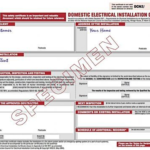Electricity Meter installation electrician
Electric meters are a great way to keep track of the amount of electricity you use. They can also aid in reducing your power bills.
 They are typically an encased metering device made of glass that resembles a large mason jar. They are equipped with five dials as well as a large , rotating wheel which is used to measure the amount of kilowatt hours of electricity.
They are typically an encased metering device made of glass that resembles a large mason jar. They are equipped with five dials as well as a large , rotating wheel which is used to measure the amount of kilowatt hours of electricity.
The Feeder Side
The feeder side of an electricity meter installation is the most important to the homeowner because it is a part of the electrical system in general. This part of the meter’s base is where the power from the utility company gets connected to the meter and the corresponding wires to the rest of your electrical system. It’s also where you’ll discover the most obvious wire connections: hot, neutral and ground. The best part is that the utility company will typically supply the meter as well as the wiring, but the responsibility of connecting it all is up to you.
To put together the top-quality base for your meter you’ll need some of the above items, as well as a hefty helping of anti-corrosion compound to protect your wires from the elements. First consider the orientation of the meter (left or right-hand front), and then measure the lengths of the three wires that you plan to connect to it. A measuring tape with telescoping capabilities is the ideal tool for home electrical installation this. Make sure to wear gloves.
The Load Side
The load side of an installation electricity meter is where the incoming electric feed leaves the meter and is then fed into the main service panel. This feed can come from a single or multiple circuit breakers inside the main panel. The load connection is typically located at the bottom two load terminals on the hot bus bars on the meter however, it can be accomplished using an interim disconnect (See Figure 3).
The conduit that runs from the service wires to meter must be in conduit. It should be placed in a position where it isn’t blocked by furniture or other obstructions. It must be at least two feet (2′) from any exposed wiring on the side of the meter that is loaded and must be connected to the meter base with an entrance cap on top of the conduit (see figure 16).
If the wires aren’t in conduit, then they must be routed in a weatherproof conduit in case LES accepts a different route. The conduit must be in an area where it is not blocked by anything and can be easily accessible by Company representatives to read the meter or conduct tests.
The meter base must be secured to brick or concrete block studs. A backing of 3/4-inch thick outdoor plywood is required in the event that the meter will be mounted on vinyl, metal, or wood lap siding. It should be positioned level and straight. It should be located in an area where it is easy for Company employees to read, test and maintain the meters.
The Grounding Wire
Electricity meters have a grounding wire to protect the home from the effects of excess electricity. Grounding wires can be used to safely disconnect power from the home in the case of an overload or short circuit. power.
One of two ways the grounding wire connects with the earth outside your home electrical installation (mouse click the up coming webpage) is to use a copper water pipe or an 8-foot long ground rod. It could be connected to a copper water pipe or an 8-foot long rod for grounding that is driven into the soil.
If the grounding wire doesn’t work properly, electricity may get through other channels to your home electrical installation. This can cause damage to electronics and appliances or even cause a fire in your home electrical installation. It is essential to be aware of the root of the problem so that you can avoid them.
The prongs are an excellent way to check if your outlets are grounded. Grounded outlets have three slots whereas ungrounded outlets have only two slots. The ground wire is connected to the d-shaped slot beneath the parallel slots.
Electrical currents draw attention to the solid mass of earth beneath your feet due to the fact that it has negative electrical charges. Ground wires are designed to let these positive charges be located in a safe area so they don’t become energized and cause trouble.
If your electric meter is not in place or has been repaired in the past you should call your utility company. They’ll be able to verify that it is properly grounded. To ensure it is working properly an electrician licensed by the state should inspect the meter.
If you are choosing an electrician to install your new meters, be aware of the rules and regulations your local utility provider has set. They’re accountable for protecting your home from voltage spikes and keeping your family safe.
In addition to connecting the ground wire to the meter base and meter base, they should also make sure that all metal casings for electrical loads are connected to neutral in the system. If the hot or neutral wires are energized it could trigger the breaker. This could result in an electrical shock, or even death.
The Meter Mechanism
The Meter Mechanism is the component of an electricity meter that performs the actual measurement. It can be found on the pole of a utility or a box.
The metering mechanism of an electric meter is usually made of aluminum that rotates in response the changes in the magnetic fields of the coil due to current and voltage. It spins at a speed proportional to the amount of electricity consumed.
A spindle with gears attached to it holds the disc that is a meter long. The gears spin a register that displays the energy utilized by series dials in kilowatt hours (kWh).
An electricity meter is comprised of three major components: the disc, home electrical installation the mechanism of the disc, and a display. The disc is the main element of the meter because it determines both the amount of electricity used and the total number of kWh.
To get an accurate reading, the meter has to be calibrated using a standard. This is usually done in a laboratory. In this way the meter is tested to ensure that it is not over or undershooting the wattage or current of its circuit.
After the meter has been correctly calibrated, it is able to be placed in a meter box. It is connected to the reference voltage grounded wire, as well as a grounding wire that runs through the meter box until the grounding rod, which is buried beneath the ground.
Sometimes, a meter may export energy to the grid along with its consumption. In these cases the meter can reverse itself during times that there is net export and reduce the total energy consumption. This will allow the customer to receive credit for any energy that flows from the meter into the grid, even if this is less than the actual consumption at the meter.
To keep the meter running correctly, the technician must connect the line and load wires to the terminals of the neutral busbar in the center of the meter box. These wires are usually marked with white tape to indicate that they are neutral. After the wires are properly spliced, then they are secured by being tightened.



